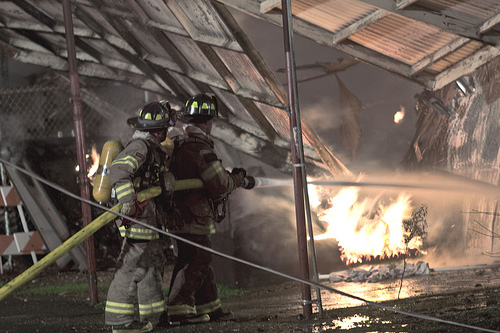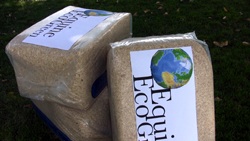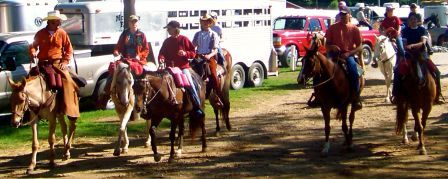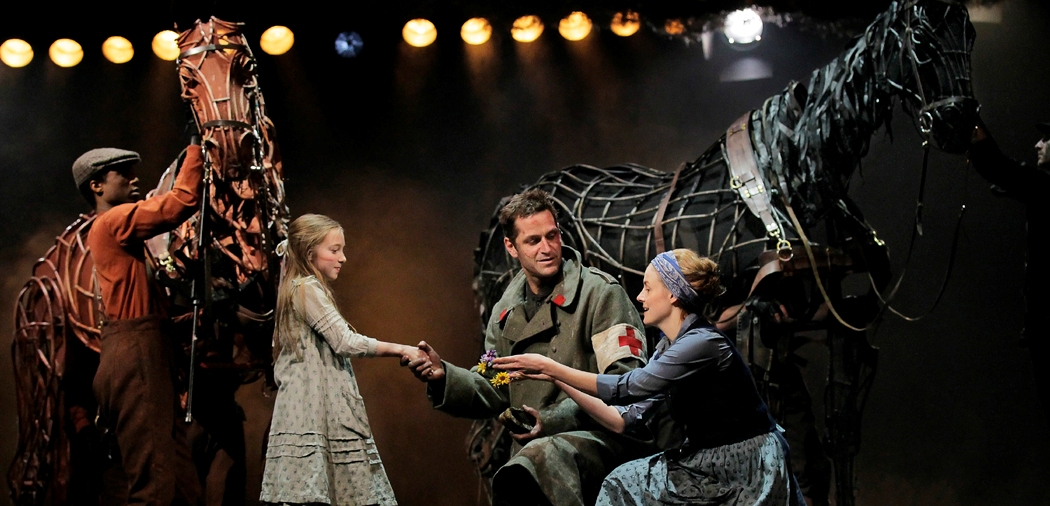
War Horse By L.A. Pomeroy
“In grateful and reverent memory of the Empire’s horses who fell in the Great War (1914-1918). Most obediently, and often most painfully, they died.”
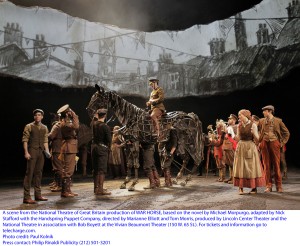 So reads the memorial at the Church of St. Jude in London dedicated to the mounts that served their country in World War I. Overall, nearly eight million horses died during World War I, and of an estimated one million English horses taken to France to be used by the British Army, only 62,000 came home.
So reads the memorial at the Church of St. Jude in London dedicated to the mounts that served their country in World War I. Overall, nearly eight million horses died during World War I, and of an estimated one million English horses taken to France to be used by the British Army, only 62,000 came home.
Nearly a century later, these courageous animals, sacrificed in the name of something they did not understand, have been honored again through the theatrical and film productions of War Horse.
A British children’s novel by Michael Morpurgo, War Horse tells the story of Joey, a handsome gelding conscripted into World War I, and Albert, his courageous young owner, who navigates its embattled trenches to find him.
Originally produced by the National Theatre of Great Britain, its presentation on Broadway by the Lincoln Center Theater and Bob Boyett has grossed roughly $900,000/week (an uncommon achievement for a non-musical with a relatively unknown cast), and swept the 2011 Tony awards for Best Play (adapted by Nick Stafford), Best Direction (Marianne Elliott and Tom Morris), Best Scenic Design (Rae Smith), Best Lighting (Paule Constable), and Best Sound (Christopher Shutt), in addition to a Special Tony Award to Handspring Puppet Company.![wh1-260_WarHorse[1] 150 War Horse](http://eliteequestrianmagazine.com/wp-content/uploads/2011/12/wh1-260_WarHorse1-150-300x282.jpg)
Morpugo said the inspiration for War Horse came from an old painting, depicting a British cavalry charge up a hill towards the German position, including several horses cruelly trapped in the barbed wire that historically stretched across the western front.
“I was trying to write the story of the First World War as seen through the eyes of a horse,” Morpugo said, when he met an old soldier who had been there, with the horses, in 1916. “His eyes filling with tears, he talked for hours about the horse he’d loved and left behind at the end of the war, how it had been sold to French butchers for meat.
“I determined then and there to tell the story of such a horse. But how? I had to find a way that didn’t take sides. So I conceived the notion I might write the story as seen through a horse’s eye, a horse that would be reared on a Devon farm, by the forebears of the village people I knew; a horse that is sold off the farm to go to the front as a British cavalry horse, is captured by the Germans to pull ambulances and guns, and winters on a French farm. It would be the horse’s view of the universal suffering of that dreadful war in which ten million men died and unknown millions of horses.”
![w3-542_WarHorse[1] 150 War Horse](http://eliteequestrianmagazine.com/wp-content/uploads/2011/12/w3-542_WarHorse1-150-300x291.jpg) The tactics of battle were revolutionized during World War I when the surprise, speed, precision and ruthlessness of horse cavalries were upended by the introduction of barbed wire and automatic machine guns. By the final years of the war, a new weapon emerged that was mobile, deflected machine gun bullets, and crushed barbed wire: the noble cavalry horse became obsolete with the advent of the armored tank.
The tactics of battle were revolutionized during World War I when the surprise, speed, precision and ruthlessness of horse cavalries were upended by the introduction of barbed wire and automatic machine guns. By the final years of the war, a new weapon emerged that was mobile, deflected machine gun bullets, and crushed barbed wire: the noble cavalry horse became obsolete with the advent of the armored tank.
What clinched Morpurgo’s determination to tell the story of War Horse was an event that proved horses are never obsolete in their ability to touch our hearts: “In 1975, my wife, Clare, and I were setting up Farms for City Children, an educational charity we hoped would enrich the lives of urban children by enabling them to spend a week living and working on a farm.
“A young boy from Birmingham came with his classmates. He was called Billy. Billy, I was told by the teachers, had been fostered by several families, was withdrawn, and so tormented by a stammer that by the age of seven he had given up speaking at all.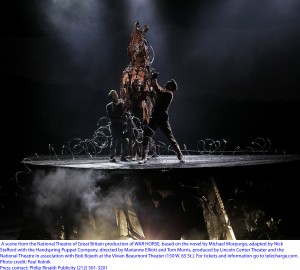
“One November evening, I had come to the farmhouse to read for the children. As I came into the stable yard behind the house, I found Billy standing there under the stable light, talking freely to one of the horses. He spoke confidently, knowing he was not being judged or mocked. And I had the very strong impression that the horse was listening, and understanding, too. It was an unforgettable moment for all three of us, I think. It was that extraordinary, inspirational moment that gave me the confidence I needed to begin writing War Horse.”
The Stephen Spielberg-produced, Disney/Touchstone film, War Horse, opened nationwide on Christmas Day, December 25.
The National Theatre’s production will embark on a U.S. national tour in June 2012, bringing the Tony award-winning play to 20 cities during the 2012-2013 season, including a new production at Toronto’s Princess of Wales Theatre (February 2012) for an open-ended run. The tour will rehearse and preview at Boise (ID) State University’s Morrison Center before beginning performances at the Ahmanson Theatre in Los Angeles, June 13 – July 22, 2012. Tour stops are planned for 2012-2013 in San Francisco, Dallas, Minneapolis, Pittsburgh, Philadelphia, East Lansing and others (TBA).
“War Horse has become the greatest success in our history by telling an impactful and resonant story with extraordinary creativity,” Nicholas Hytner, Director of the National Theatre, told Hennepintheatretrust.org “We’re looking forward to continuing our journey with War Horse by bringing it to audiences across North America.”
By L.A. Pomeroy
War Horse
Lincoln Center Theater Production
Credit photo: ©Paul Kolnik




